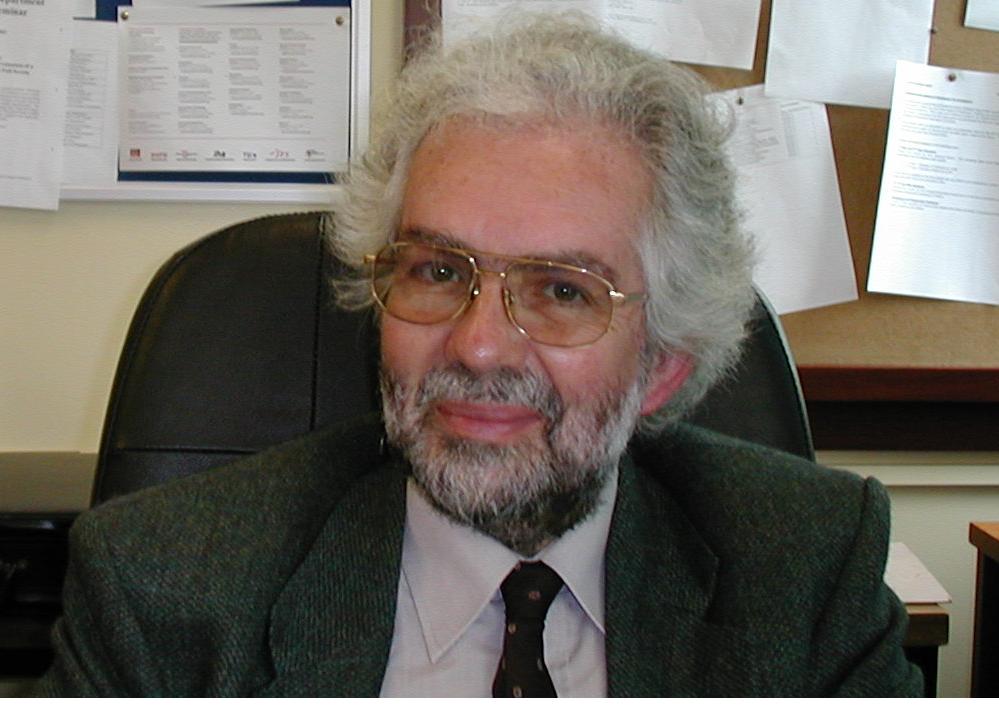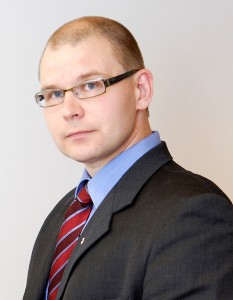Keynotes
The conference has two keynotes, presented by:
- Alistair Sutcliffe, School of Computing, University of Lancaster & University of Manchester, the United Kingdom
- Jari Renko, CIO of Hospital District of Helsinki and Uusimaa (HUS), Finland
Extending the Socio-Economics of
Software Architecture
Alistair Sutcliffe
School of Computing, University of Lancaster & University of Manchester
Presentation slides in PDF
In my previous work I have argued that social and economic considerations can shape software architecture. This presentation be a talk in two halves linked by the theme of modelling abstraction and component coupling in software architecture.
First I will review the socio-economic framework I proposed (Sutcliffe, 2008, 2009) against my perceptions of where the economic Darwinian environment has favoured certain architectural genres and not others. Then I will contrast this with the research I have been involved in more recently for self-aware adaptive software architecture for classes of sense-making problems with multiple datastreams and ‘human in the loop’ adaptation. The specific application – a sense-making system to diagnose early signs of Alzheimers Disease by monitoring user-system interaction and text mining the content of emails – will be described, followed by an examination of the architecture decisions about coupling between data capture, sense-making interpreters, user feedback and adaptation in the light of the ambition to create a generic adaptive sense-making architecture which could be applied to other domains such as education and training.
The second part will take a more human-centric view of software architecture, based on my research on value-based requirements engineering. At first sight, the proposition that ‘soft issues’ – users’ values, motivations and organisational politics – could have a direct influence on the design of software architecture may seem far fetched. I will attempt to convince you otherwise. A framework of analysing users’ values and related software issues will be described (Thew & Sutcliffe, 2008). The implications of user values for high-level system requirements will be described, leading to a discussion of how some user values, such as openness, have implications for software architectures and how such implications might drive decisions about control and coupling in architecture. This theme will be illustrated with my experience in developing health informatics applications to support medical researchers in epidemiology and health analysts in UK hospitals (Sutcliffe et al., 2010). The impact of user-stakeholder values and organisation politics on the final software architecture shows the consequence of pragmatic decision and some principles.
I will bring these two themes together with a proposal for developing an application domain-anchored theory of software architecture (Sutcliffe, 2002), where both abstract conceptual models and human values are integrated early in the requirements specification process to inform software design.
Sutcliffe, A.G. (2002). The Domain Theory: Patterns for knowledge and software reuse. Mahwah NJ: Lawrence Erlbaum Associates.
Sutcliffe, A.G. (2008). The socio-economics of software architecture. Automated Software Engineering, 15, 343-363.
Sutcliffe, A.G. (2009). On the inevitable intertwining of requirements and architecture. In K. Lyytinen, P. Loucopoulos, J. Mylopoulos, & B. Robinson (Eds). Design requirements engineering: A multi-disciplinary perspective for the next decade. Berlin: Springer.
Sutcliffe, A.G., Thew, S., De Bruijn, O., Buchan, I., Jarvis, P., McNaught, J. & Procter, R. (2010). User engagement by user-centred design in e-health. Philosophical Transactions of the Royal Society, special issue on e-Science, series A, 368, 4209-4224.
Thew, S. & Sutcliffe, A.G. (2008). Investigating the role of soft issues in the RE process. In Proceedings of 16th IEEE International Requirements Engineering Conference RE 2008. (pp 63-66) Los Alamitos CA: IEEE Computer Society Press.
Alistair Sutcliffe
Professor Alistair Sutcliffe retired from the University of Manchester in October 2011; however, he continues his research as a visiting professor in University College London and the University of Lancaster. He has been principle investigator on numerous EPSRC and European Union projects, including the recent EPSRC/ESRC Developing theory for Evolving Socio-Technical Systems (TESS) which investigated social media and the evolution of social relationships; EPSRC E-Science project Adaptive Visualisation Tools for e-Science Collaboration (ADVISES) and EPSRC Artificial Cultures that simulated the evolution of complex socio technical systems. His research interests span a wide area within Human Computer Interaction and Software Engineering. In HCI particular interests are theory and models of user experience, interaction design, social media and design of complex socio-technical systems. In software engineering he specialises in requirements engineering methods and tools, scenario based design, knowledge reuse and theories of domain knowledge. He serves on the editorial boards of ACM-TOCHI, REJ and JASE. Alistair Sutcliffe is founder of IFIP TC-13 Working Group 13.2 ‘Methodology for User Centred Design’ and member of IFIP working groups 2.9 (requirements engineering). He has over 250 publications including five books and several edited volumes of papers. He was awarded the IFIP silver core in 2000 and a Lifetime Achievement Award by the IEEE Requirements Engineering community in 2011.
Some practical considerations for Healthcare IT-system Architecture
Jari Renko
Master of Science EE, CIO at Hospital District of Helsinki and Uusimaa (HUS), Finland
Many of the key challenges in my role as a CIO of a group of hospitals have to do with decisions that shape the technology and IT-architecture enabling, or as the case may be, limiting the availability, reliability and transparency of information as an integral part of the total healthcare process. Similar consideration is required developing the role of the hospital as a part of the whole of healthcare field, exchanging complex information between various organizations throughout the lifetime of the patient.
Ideally healthcare may be considered as a group in complex processes, in which the patient is in the central role. Various aspects of healthcare include hospitals, primary care, home care, preventive healthcare as well as the pharmaceutical industry. Intertwined into the whole, in a central role is also the constantly developing medical science, researched and taken into active patient use at all levels of the healthcare chain.
I will address some of the key high-level functional requirements and current limitations for select health information systems and will briefly highlight some key differences of focus between different healthcare delivery models in use in Europe and North America. Key concepts of “continuity of care” and “patient pathways” are described and developed from the viewpoint of healthcare delivery organization and the patient and from their implications to architecture decisions. Various integration methods and current healthcare interface standardization work is discussed to illustrate the possible quick-win-strategies and main stumbling blocks experienced by user organizations with these methodologies.
Ease of use of is a major factor in effectiveness of any healthcare IT-system, influencing a number of aspects from simple process throughput time to patient safety as influenced by timely and accurate information to the elusive user compliance. Key requirements for ease-of-use in healthcare environment, specifically hospital environment are described from the design limitations point of view. I will then illustrate the practical implications of successful and unsuccessful healthcare IT-system implementations through selected practical examples and elaborate in more detail on the various implications of user compliance and its influence to the overall success of implementation.
Jari Renko works as the Chief Information Officer (CIO) of Helsinki and Uusimaa Hospital District, a group of 20 hospitals providing specialist medical care to patients in Uusimaa area of southern Finland. With a degree in technology and engineering and a background in Telecommunications and Information sciences, Jari is constantly seeking new ways for applying information technology to help with the day-to-day running of a University Hospital. His special emphasis is on relieving clinicians from repetitive administrative tasks, increasing availability and transparency of flow of information while focusing on patient safety. Jari is convinced that the most pressing challenge for information technology in today’s hospitals is making IT transparent, easy to use and readily available to support clinicians in their day-to-day tasks.









